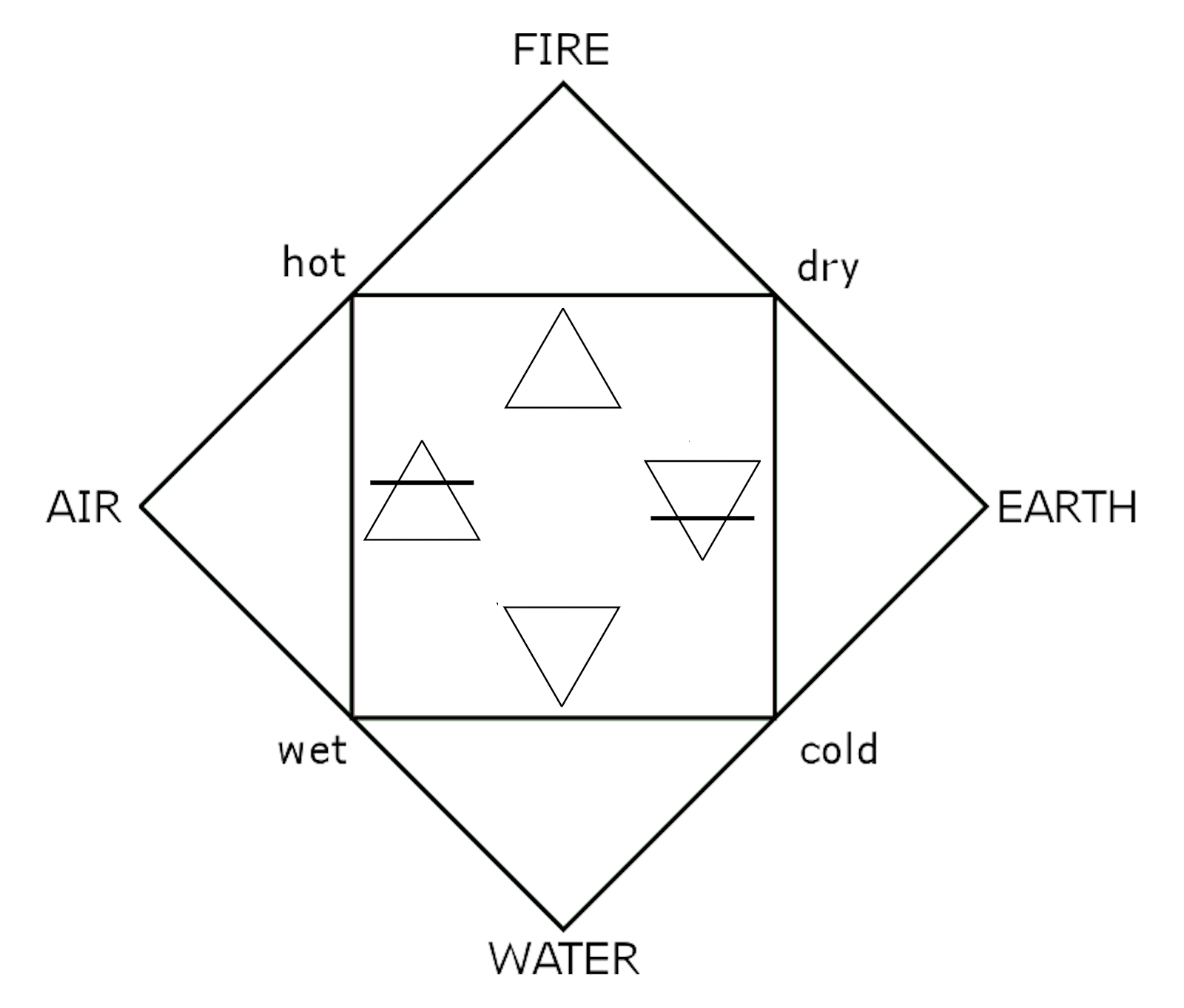
The Four
Elements in Greek Cosmology
Greek philosophy supposed
the Universe to comprise four elements:
Fire, Water, Earth, and Air. Air
was originally supposed to be a component of the Æther [ether,
not to be confused with the gas], the element that filled the
Universe in the absence of the other three. Empedocles referred
to these as "roots" (rhizomata, ῥιζώματα), and proved that Air was a
separate element by showing that a bowl filled with air
inverted in water did not immediately fill with water, but
retained a pocket of air. Aristotle was the first to call
these roots "elements" (stoicheion, στοιχεῖον), the
smallest unit of time on a sundial, or an indivisible unit.
(The same root appears in Stoichiometry, the branch of
chemistry that deals with balance between reactants and
products).
Note that the diagram includes multiple paired associations
and opposites, in keeping with Aristotelian notions of dichotomy.
Cold / Hot, and Wet / Dry are paired across the diagram.
'Water and Fire are fundamentally contrasted: fire rises,
water falls (note directionality of their paired alchemical
symbols). Water is by nature wet and cold, features it shares
with Air and Earth, respectively. Fire is hot and dry, also
shared in the same way. Air is wet or hot, according to the
balance of moisture and heat. [Ice, Water, and Steam are not
specifically accommodated in this scheme]
The Four Elements
can also be arranged in ascending order, from
lower to higher, the Earth rising out of Water,
Air over the Earth, and the Sun (Fire)
over all. Chemical reactions occur as the reactants try to
return to their proper place in the series.
Other cultures recognize analogous arrangements: the I
Ching (Book of Changes) places the trigram for
Fire above the trigram for Water to produce
the hexagram Fire in the Lake, the symbol of Revolution.

